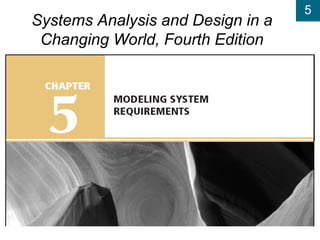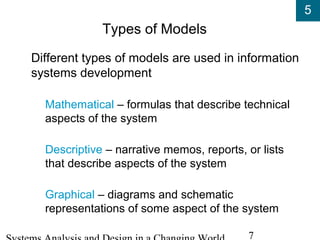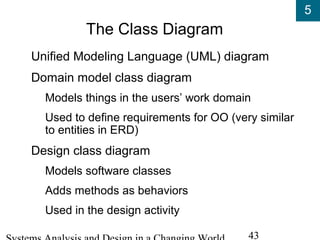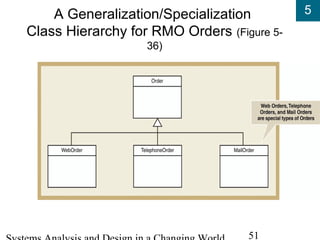The document discusses models and modeling techniques used in systems analysis and design. It describes three types of models - mathematical, descriptive, and graphical. Key steps in analysis include identifying events that trigger use cases and important "things" in the problem domain. Events are categorized as external, temporal, or state events. Use cases and an event table are used to define system requirements. Traditional approaches use entity-relationship diagrams to model data entities and relationships, while object-oriented approaches use UML class diagrams to model classes, attributes, and associations.



























































